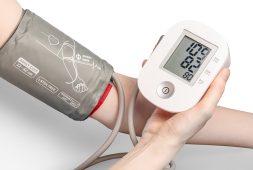Children Who Are More Physically Active Are Less Likely To Suffer From Respiratory Infections

Years back, children spent their afternoons playing outdoors. They enjoyed running around the streets with their friends and engaging in a variety of physical activities. Nowadays, this sight is no longer quite so common.
Nowadays, children prefer to stay indoors, cooped in their room as their eyes are glued on their gadgets. This sad but true reality is probably why so many children are more prone to a variety of illnesses. They need to be more active in order to be healthier.
Scientists have looked into this matter and they saw that higher levels of physical activity measured by steps taken per day and hours spent playing sports had, in fact, lowered these younger children’s susceptibility to suffering from upper respiratory tract infections (URTIs).
A secondary finding was also made and they saw that the study also took into account whether the house these kids lived in had smokers and pet hair. They also took note which vaccines they got injected with, whether they had other siblings, and how their sleeping habits were. They saw that none of these were linked with the susceptibility to URTIs either way.
Since time immemorial, our parents or grandparents have reminisced and talked about how much they spent so much time outdoors and how sad they were that today’s generation didn’t grow up the same way. In fact, many made it sound like the doors to their homes were already locked between after school and during dinner time.
Scientists hailing from Poland wanted to see what kinds of exposure and activities were able to effectively lower their susceptibility to URTIs. The results of the study only proved how the older generation was right all along.
A total of 104 Polish children between the ages 4 to 7 years old from Warsaw had their physical activity monitored with the use of pedometers between the fall-winter school year of 2018 and 2019. Their parents were asked to answer scientific questionnaires that looked into a variety of details such as the ones already mentioned, as well as the perception of URTI symptoms like coughing or a runny nose.
The authors of the study found that as the average daily number of steps taken by children throughout the study period went up by 1,000, the number of days that they experienced symptoms of URTIs lowered by an average of 4.1 days.
Also, those who had engaged in three or more hours of sport per week had even fewer days with respiratory tract infection symptoms than those who didn’t do any kind of sport.
“Children who achieved a higher number of steps in the first days of observation had fewer days with symptoms of infection in the following days, than the less-active children,” the authors had stated.
The authors, however, were not able to point out associations between URTI symptoms and sleep duration, siblings, vaccinations, or exposure to pet hair or smoking. It must be noted that many of these have also been thought of having an effect when it comes to lowering or increasing the incidence of URTIs.
While the study may seem like it’s been discussed before and that the results are already expected, especially if you talk to the older generation, the increased prevalence of screens in households lowers time spent in physical activity and increases the likelihood those in the age range, especially those who are already at a high risk for URTIs, to suffer from infections of increased duration and severity. More importantly, URTIs have also been happening a lot more frequently now.
Nonetheless, the authors of the study have recommended instilling the values of exercise, any form physical activity, or sport early on. They urge the parents to let their children participate in doing active things and if possible, done as a family.



